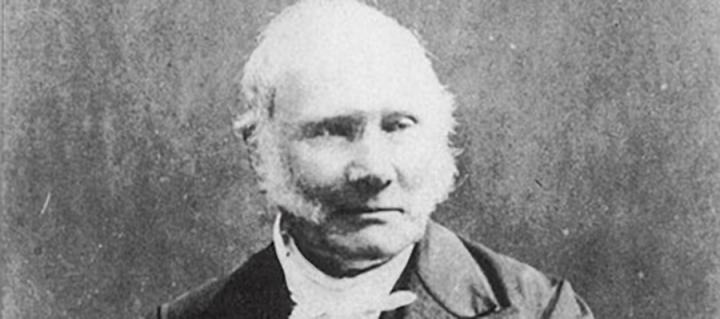Robert Stirling (1790-1878)
A church minister who invented an engine that was two centuries ahead of its time and is just coming into its own.

Robert Stirling was born at Cloag Farm near Methven, Perthshire, on 25 October 1790. He studied a range of subjects at the University of Edinburgh as a teenager, then studied divinity at both Glasgow and Edinburgh and was ordained a Minister of the Second Charge of Laigh Kirk, Kilmarnock, in 1816. He practised as a minister until his death in 1878, but it is an engineering invention that immortalised his name.
Engineering inheritance
At an early age, Robert was introduced to engineering by his father, Patrick Stirling, who had helped his own father, Michael, maintain threshing machines, of which Michael was a renowned manufacturer.
Robert showed a keen interest in sources of power for machinery, and had been working on an engine design for some years when he moved to Kilmarnock. In September 1816, the same month he was ordained, he applied for a patent for his 'air engine'.
The air engine is like a steam engine - an expanding gas drives a piston - but the external fire heats up a container of air instead of a water boiler. A closed loop of heating and cooling gives a Stirling engine better efficiency than either steam engines or modern petrol and diesel engines.
Early success
Stirling's design, which was improved over subsequent years, enjoyed some notable successes, including powering all the machinery at a Dundee iron foundry.
But the high temperatures needed to get the best power out of the engine caused common failures of 19th century materials, and the engine was heavy, meaning it was unsuitable for transport applications. Soon the Stirling Engine fell into obscurity.
Back in action
There have been intermittent attempts to exploit the Stirling engine's efficiency over the past two centuries. There was a flurry of interest in the 1980s, led by NASA, in powering cars with Stirling engines, which ultimately failed, although private enthusiasts have since built cars powered directly by Stirling engines and hybrid electric cars powered by Stirling-engine generators.
One feature of the Stirling engine is its almost silent running, which has recently been exploited in the design of submarines. Today the Swedish, Singaporean and Japanese navies use Stirling-powered vessels.
And the Stirling engine can be run in reverse, so that if you turn the engine manually, it can act as an efficient cooler, and Stirling engines are today in use in portable refrigerators and in cryogenics. A small Stirling engine has also been used as a prototype computer chip cooler that draws no electricity - it uses heat from the chip to drive a cooling fan.
Hot stuff
The most high-profile modern use of the Stirling engine has been in the rapidly evolving concentrated solar power sector. The sun's heat is focused by curved mirrors to a Stirling engine that turns a generator. Several technologies are vying for dominance in the solar field, but in 2010 Stirling Energy Systems and Tessera Solar commissioned a 1.5 megawatt plant in Peoria, Arizona, and in 2015 a Swedish technology company, Ripasso, claimed to have produced the world's most efficient solar-electricity system using Stirling engines, in the Kalahari desert, offering roughly double the energy conversion rate of conventional solar panels.
Robert Stirling was married and had seven children. He died in Galston, East Ayrshire, on 6 June 1876. He is buried in Galston Cemetery where a new gravestone was erected in December 2014 by public subscription and was rededicated in May 2015.

